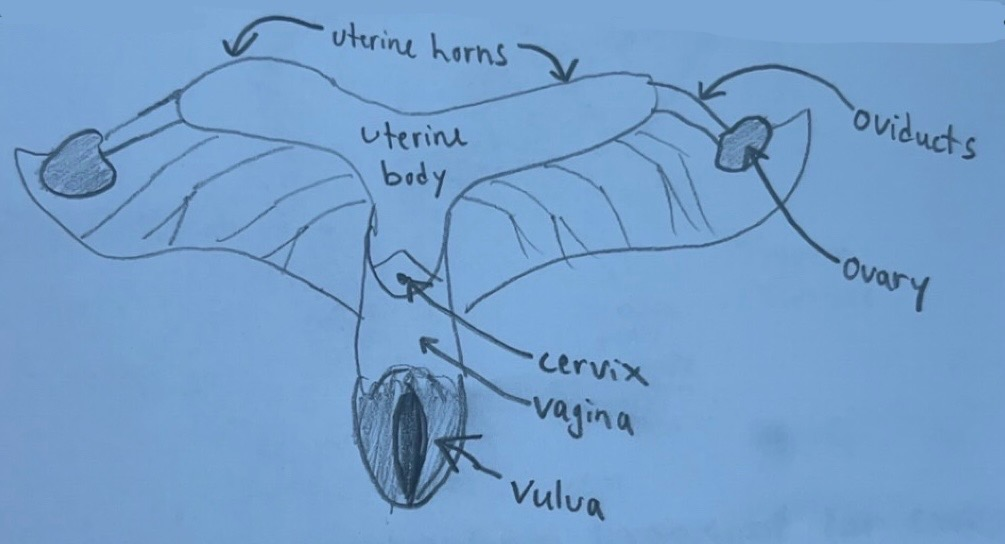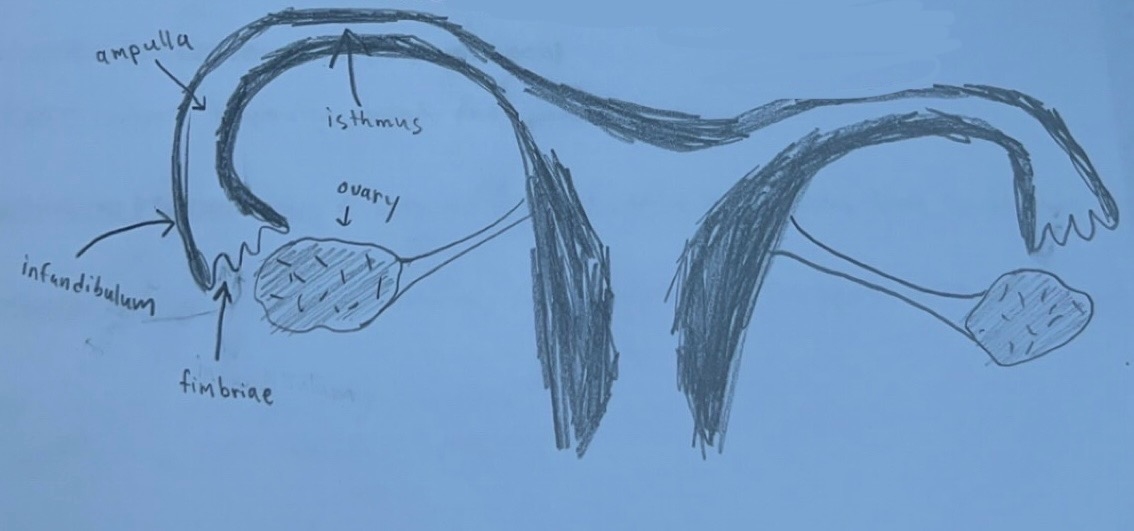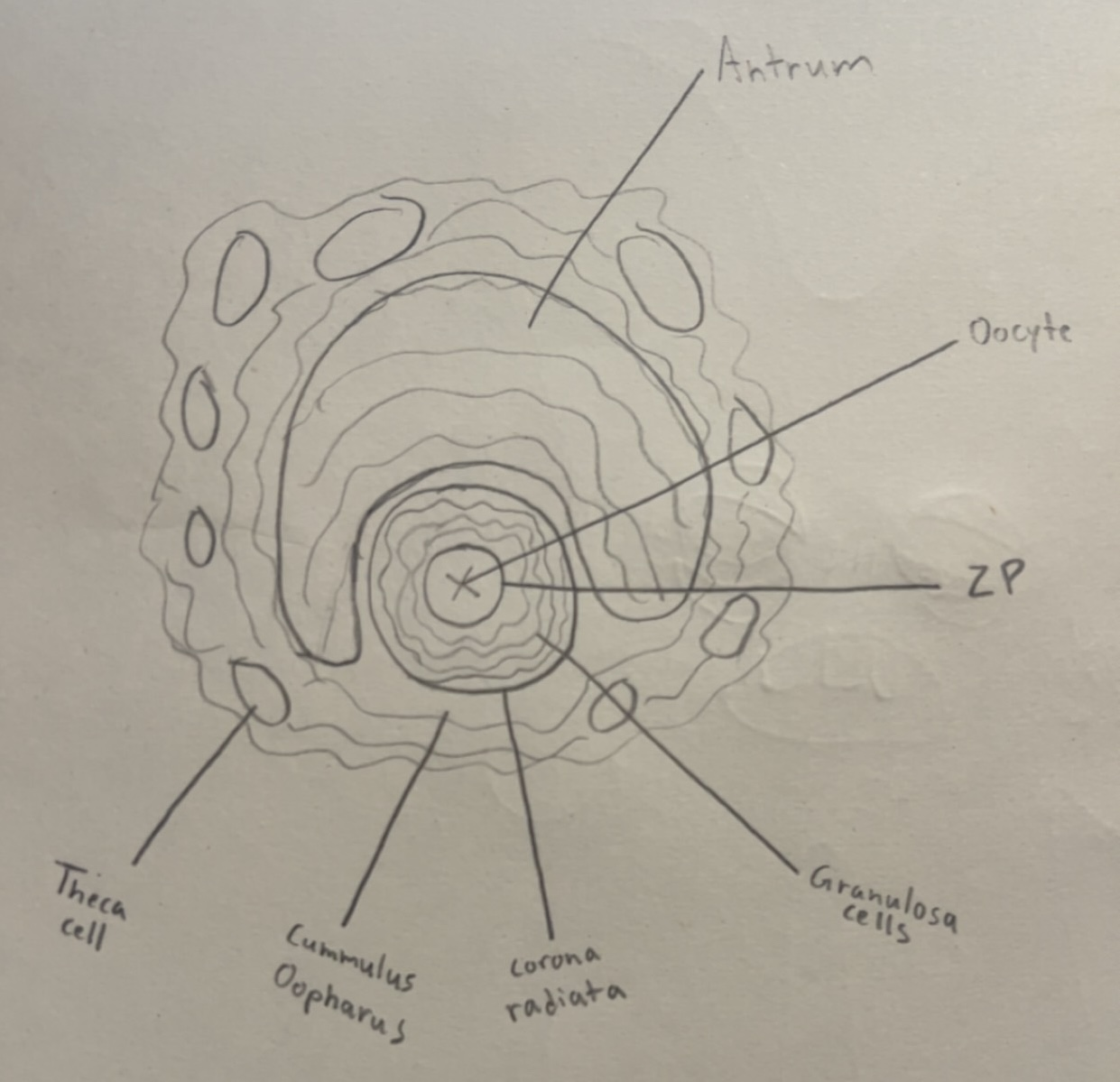ASCI 155- Final Exam, FSU
1/20
There's no tags or description
Looks like no tags are added yet.
Name | Mastery | Learn | Test | Matching | Spaced |
|---|
No study sessions yet.
21 Terms
Cleavage
without growth, fertilized egg
aka zygote
External organ of the female reproductive system
vulva
What are the 4 different mechanisms important for temperature control of the testis?
scrotum skin
has sweat glands that help cool down w/ evaporative cooling
cremaster muscle
adjusts the testicular position by contracting and relaxing the muscle
dartos muscle
alters the scrotal surface area and wall thickness, as it pulls it closer to the body
pampiniform plexus
coiling of veins and arteries, that transfer heat from warm areas to cooler areas, and vise versa
Dummy foal
no suckling reflex
Dystocia
anytime a mare needs help/assistance with birth
Beef vs Dairy cattle suckling
Dairy: weaned off right away, only feeding a couple times per day
Beef: nurse multiple times a day
Draw and label a female reproductive track

Draw and label a complete fallopian tube

Draw and label a male reproductive tract in a bull
scrotum, testis, tail of epididymis, ductus deferens, retractor penis muscle, sigmoid flexure, glans penis

Average length of Spermatozoa in Cattle
24-48 hrs
Average length of Ova in Cattle
8-12 hrs
Average length of Spermatozoa in Horses
72-120 hrs
Average length of Ova in Horses
6-8 hrs
Average length of Gestation in Cattle
279 days
Average length of Gestation in Horses
340 days
3 stages of Gestation
Zygote
Embryo
Fetus
Draw a Graafian follicle
Oocyte
ZP
Granulosa cells
Corona radiata
Cumulous Oophorus
Antrum fluid
Theca cells

Follicular waves
Estrus
Ovulation
Metestrus
CH
P4 starts to rise
Diestrus
CL
Proestrus
P4 start to drop
Ovary shapes of the different species
swine/sow (pig)
mare
cow/ewe/doe
Almond shape (cow/doe/ewe)
Kidney bean shape (mare)
Cluster of grapes (sow)
+/- E2 hormone affect on H in terms of puberty
Before puberty:
E2 has neg (-) effect on H
After puberty:
E2 has pos (+) effect on H
P4 has neg (-) effect on H
4 Stages of the follicle
Primordial follicle
before birth
Primary follicle
1 layer of Granulosa cells
not visable
Secondary follicle
2 or more layers of Granulosa cells
not visable
some theca cells
Tertiary (Graafian) follicle
Antrum fluid
surface of ovary
basically fully developed
mature oocyte